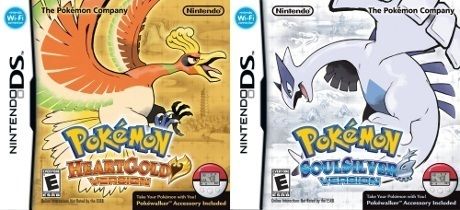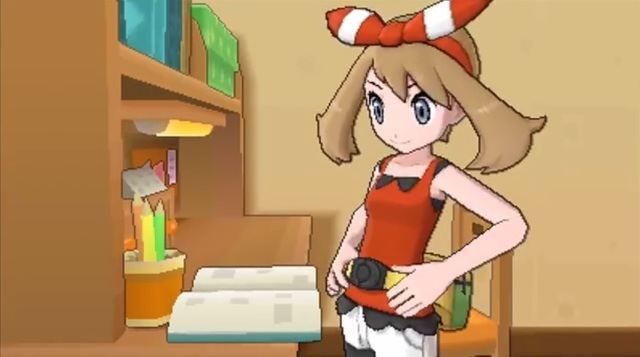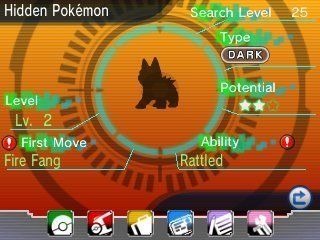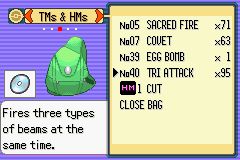That said, I was left wondering what games to pick up. Obviously, I didn’t want to pick up something that I already played such as Ocarina of Time or Majora’s Mask 3D. I wanted to get back into Pokemon, and so I asked the store clerk what games were available.
The clerk gave me a list of the current generation of Pokemon games. However, I quickly came across a personal problem: my girlfriend already had X, and my brother had Y. I had expected to wait a little longer for Pokemon Z, but that game is not likely to come out anytime soon. As a result, the Hoenn remakes seemed like the only rational purchases - much to my disappointment.
Now don’t get me wrong: I love the Hoenn region, and many of the Pokemon it introduced. The problem wasn’t the region… it was that it was another Pokemon remake, and I didn’t want to go through that disappointment again.
But why would you not want a remake of your favorite game RR-sama? You should have been excited!
See, that’s what I was thinking.
However, my all time favorite regions - Kanto and Johto - also got remakes, and the latter one just didn’t do it for me. The jump from the original Gameboy to the Gameboy Advance did a lot for Red and Green. It improved the sprite quality, the gameplay mechanics were updated, and many new features helped make the classic Pokemon games feel as fresh as an Inkling on the spawn point (Splatoon joke… unrelated, I know). On the other hand, Soul Silver and Heart Gold didn’t really do much for me.
The games were already pretty ’new’…
While the space between Red and Fire Red and the space between Silver and Soul Silver were pretty much the same, the games didn’t really have any major improvements since Pokemon Gold and Silver. Sure, we added natures, double battles, and the works, but Generation IV didn’t really add anything to Generation III. We got semi-3D worlds to walk around in… that’s about it.
Pokemon Crystal fixed a lot of what was already wrong with Gold and Silver. In fact, it added in many features that wouldn’t become constants with the Pokemon series until Pokemon Emerald came out in 2004 such as:
Pokemon having short animations when sent out The Battle Tower / Battle Frontier Choosing between a male or female protagonist Special being split into Special Attack and Defense (this has been constant since Gold and Silver) Re-balances, and in-game information about Pokemon attacks and abilities
As a result of these additions, the jump from Generation II to Generation IV is - generally speaking - quite underwhelming. While I’m sure Nintendo and the Pokemon Company tried their best to make sure that the game would be a rewarding experience to long-term fans of the series, ultimately it just pandered to nostalgia (see: GB Sounds). Since there was nothing much to add to the games that wasn’t already there, Soul Silver and Heart Gold - in my opinion - suffered from an inability to recapture the interest of players who have already played the games, or at least those who had played Pokemon Crystal.
Personally, I barely got past the 3rd gym before I got bored with the game and started playing the original Silver version on Gameboy Color. It was almost as though the lack of changes was so abysmal that I couldn’t help but return to the original to make sure my nostalgia wasn’t just playing tricks on me. It was only after a year or two that I finally returned to Soul Silver for the sake of beating it out of principle.
So what makes Omega Ruby a good remake?
I have to admit: when my brother was ranting on about how great Pokemon X and Y were, I was a skeptic. I was even more skeptical of Omega Ruby and Alpha Sapphire since I was sure that they would be nothing more than the original games in 3D. I was wrong… and I am so glad that I was wrong.
The nostalgia trip begins…
(Video courtesy of MunchingOrange’s Youtube channel)
When I started up Omega Ruby, my reaction was pretty similar to the Let’s Player in this Youtube video. The game’s opening had been completely recreated using the 3DS’s capabilities, and it even added in some extra scenes for good measure. The scene where we discover we are actually in the protagonist’s POV when the original Gameboy Advance intro was playing during the character setup stage also left a lingering positive impression on me that I still grin at occassionally. It was a fresh coat of paint that impressed me from the get-go, and I was immediately hyped up for the rest of the game.
Another thing that impressed me was the addition of fully animated cutscenes such as the first time when you meet your rival (screenshot above). While these were already present in X and Y, the fact that they re-did scenes for Ruby and Sapphire in a similar fashion felt like a genuine effort by the developers to re-imagine the highlight moments of Generation III. These cutscenes made the game feel new, as if I was venturing through Hoenn for the first time despite having played the Gameboy Advance titles before.
The DexNav
Before I bought Omega Ruby, I read Autumn’s DexNav guide. In it she talked about the DexNav’s features, and pretty much covered anything that you could need to know about using the feature. However, I’d like to talk more about how it changes the way the game works.
Unlike in the original Ruby Version for the Gameboy Advance, I found myself constantly using the new DexNav feature to find Pokemon I wanted on my team as opposed to those that I simply found along the way. Not only that, but thanks to the PokeNav’s features such as Super Training, I wound up spending hours in the first few routes trying to catch a Pokemon with the best IVs possible, only to spend hours more training them in the Super Training to get the best EVs.
The strangest part about all of this for me? I hated the concept of IV and EV training prior to playing Omega Ruby.
The meta-game is just that much more accessible!
Thanks to the previously mentioned Super Training and DexNav, getting a perfect stats Pokemon early on in the game isn’t all that difficult to do. In fact, if you know some basic stuff about the Pokemon meta-game then this can open up a whole new world of gameplay experiences for returning players.
It also helps that TMs are now infinitely re-usable. In the original games, TMs were only usable once. This meant that players fell into one of two camps: those who used them and regretted it, or those who didn’t use them out of fear of no longer having them. This infinite TM change is perhaps the best feature I have ever seen in terms of gameplay changes. While this feature was originally added in Black and White, as someone who hasn’t played the games since Generation IV this is truly a blessing.
All of these features combined have helped me not only get back into Pokemon, but also into the meta-game, something I never thought I’d ever be interested in.
Any final thoughts, RR-sama?
If you haven’t played Pokemon in a while (I’m talking about GBA or even early DS titles) then I’d suggest picking up one of the new remakes. It’s familiar territory with a great new shiny coat of paint. However, if you like the idea of customizing your character, I’d pick up X or Y instead. I heard that the customization features in that game are great, and it’s a bit of a shame they didn’t carry over to Omega Ruby and Alpha Sapphire. I guess I’ll just have to wait until Pokemon Z comes out for that feature.
Now if only they’d remake Kanto again… Fire Red is starting to show its age.
What do you guys think? Have the new features in the Pokemon 3DS games changed how you play? Have I simply not played the remakes long enough to find the flaws? Leave your thoughts in the comments section below!





